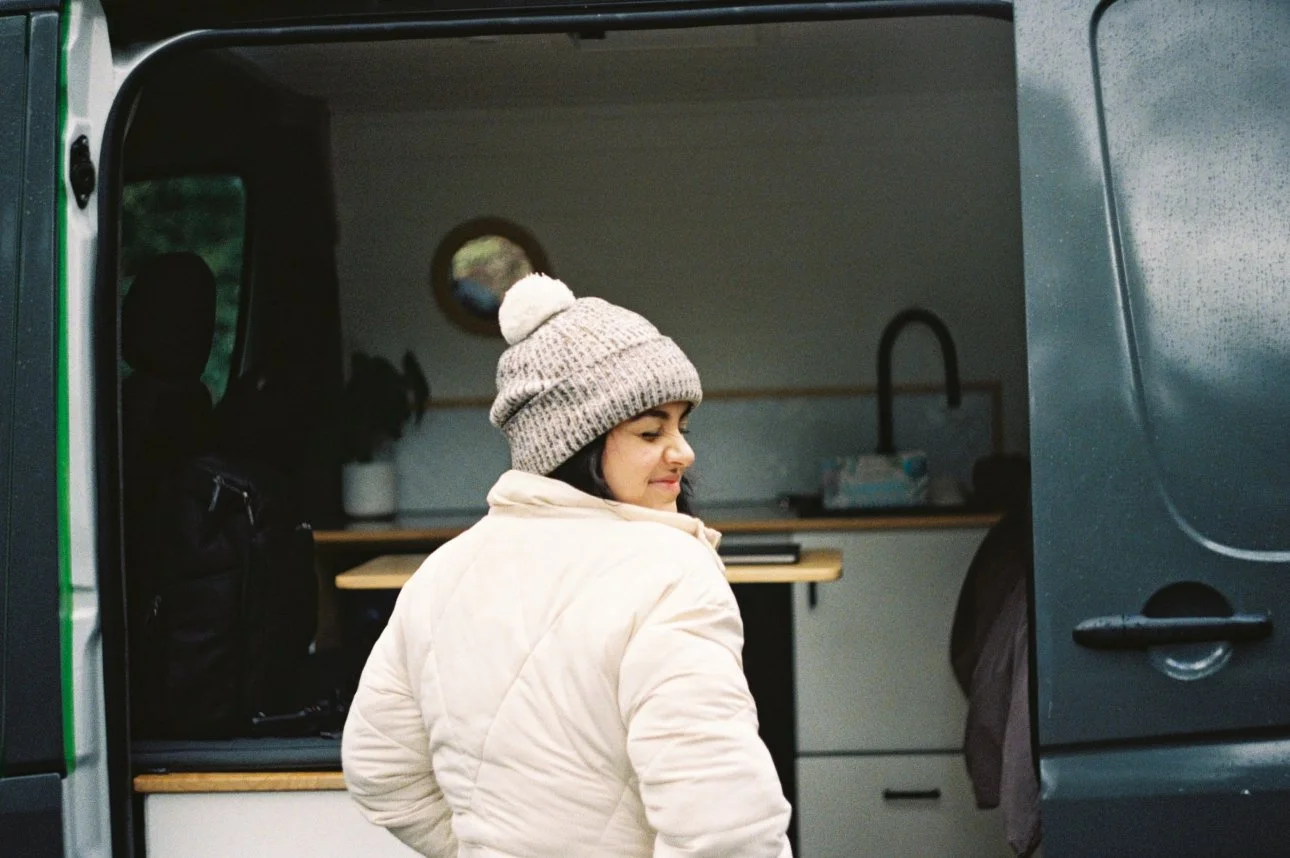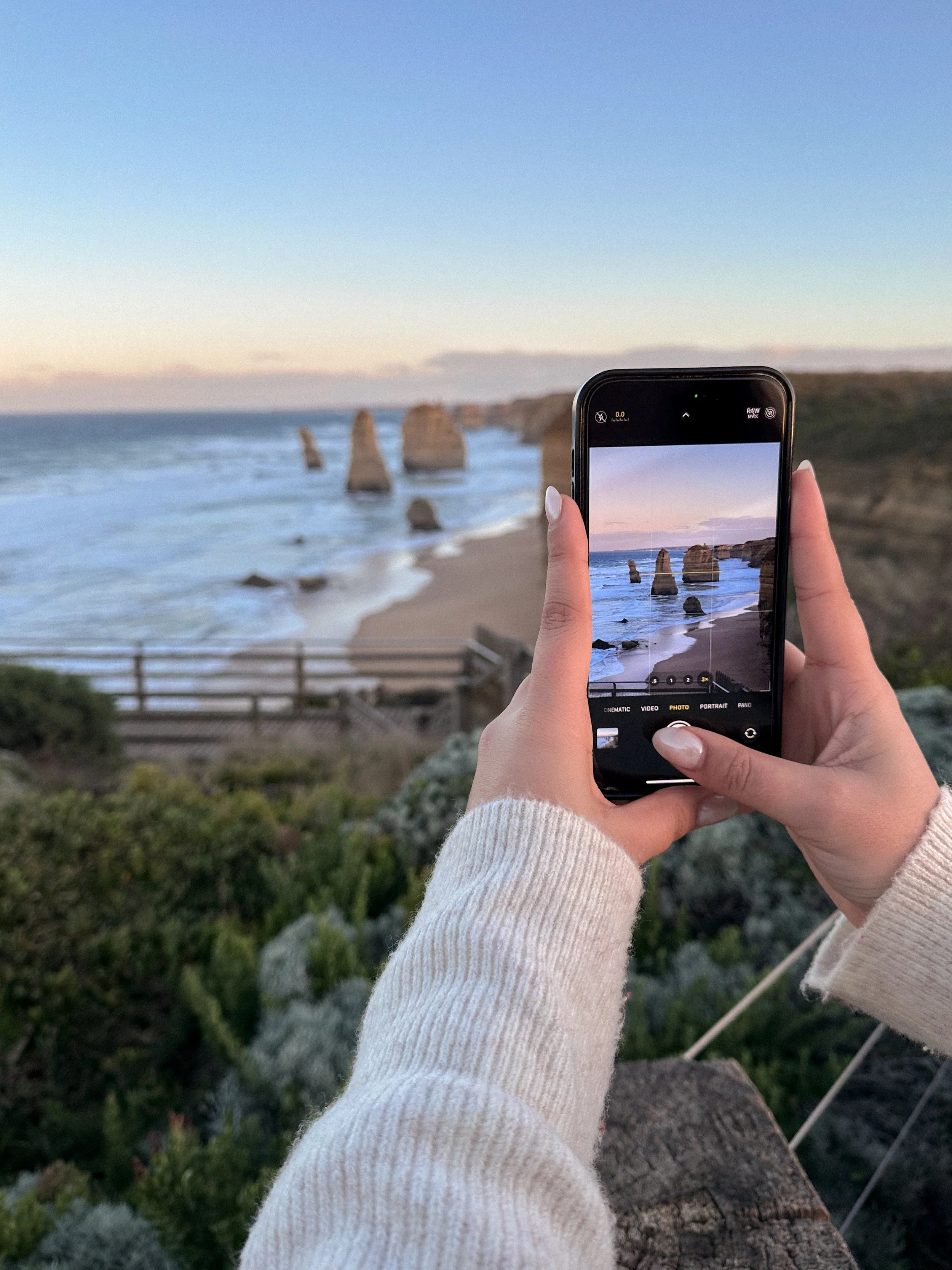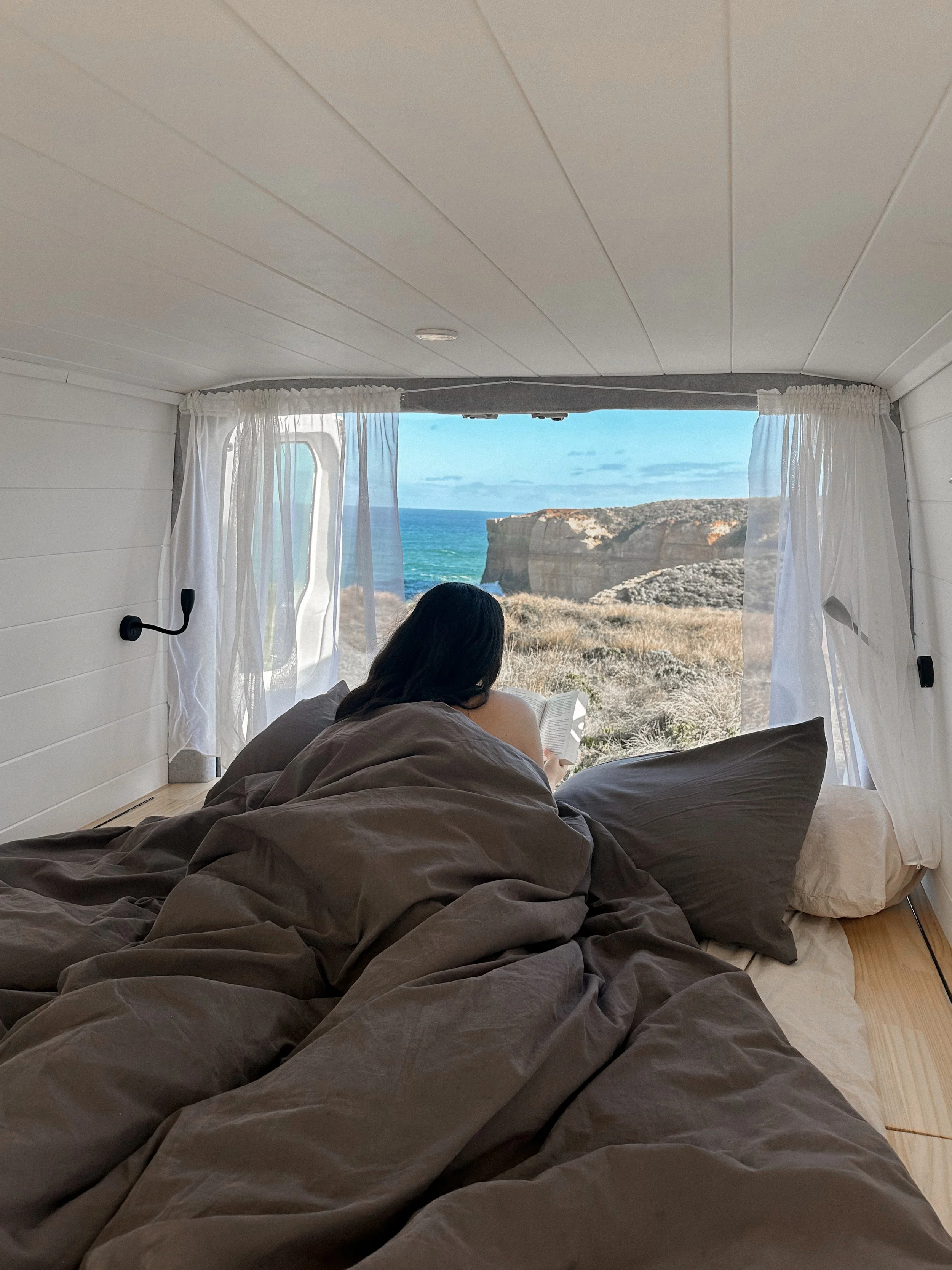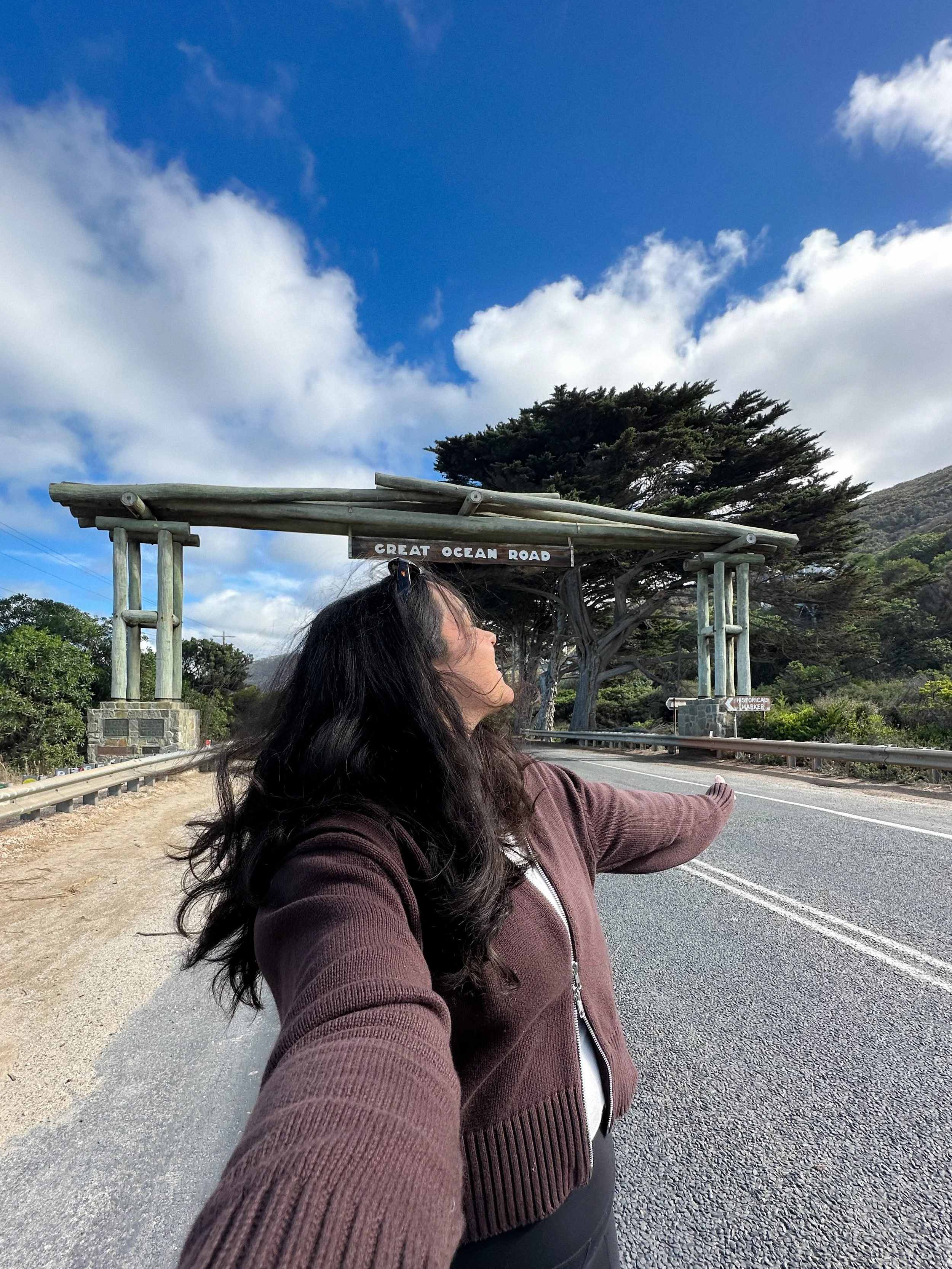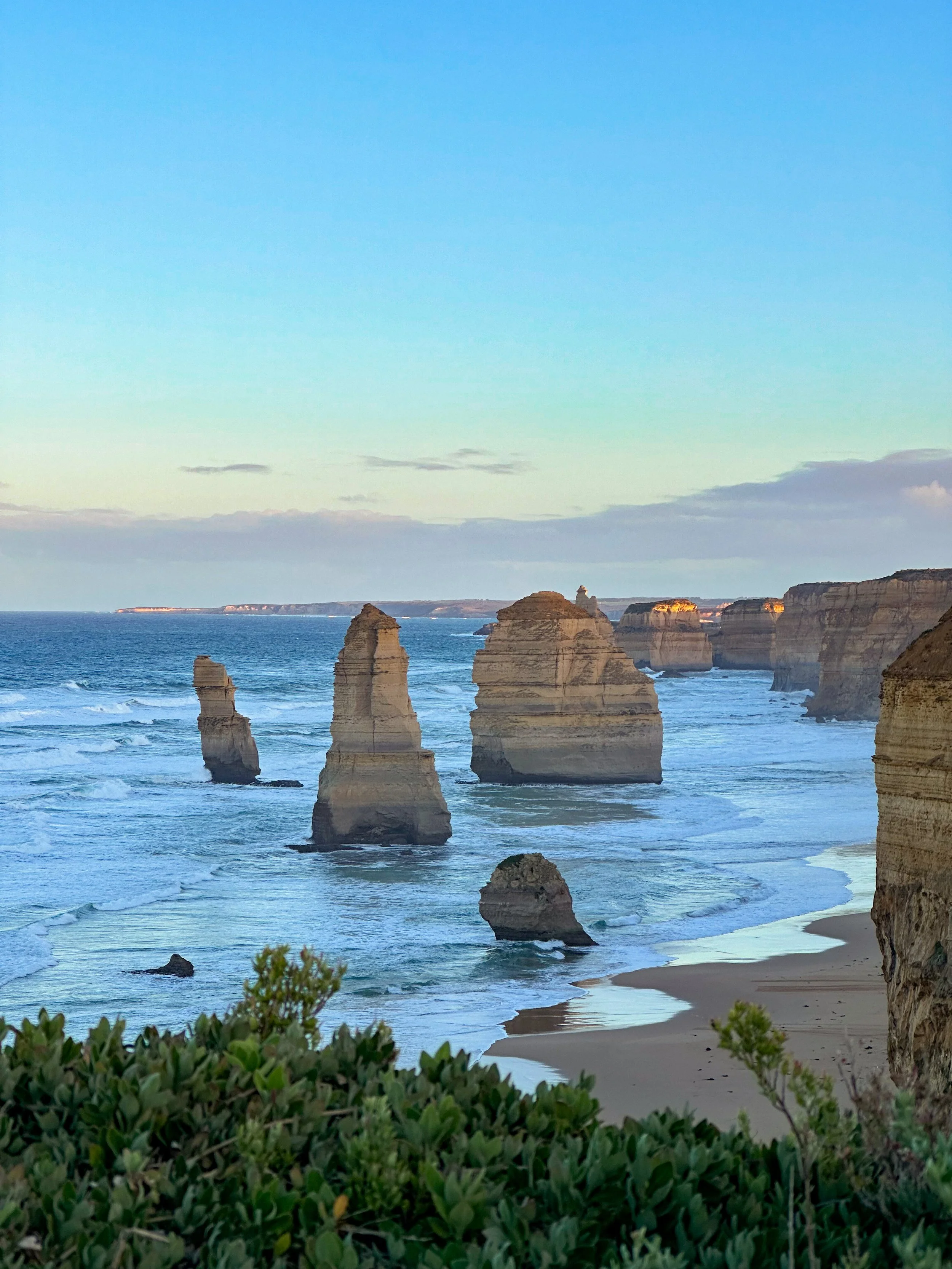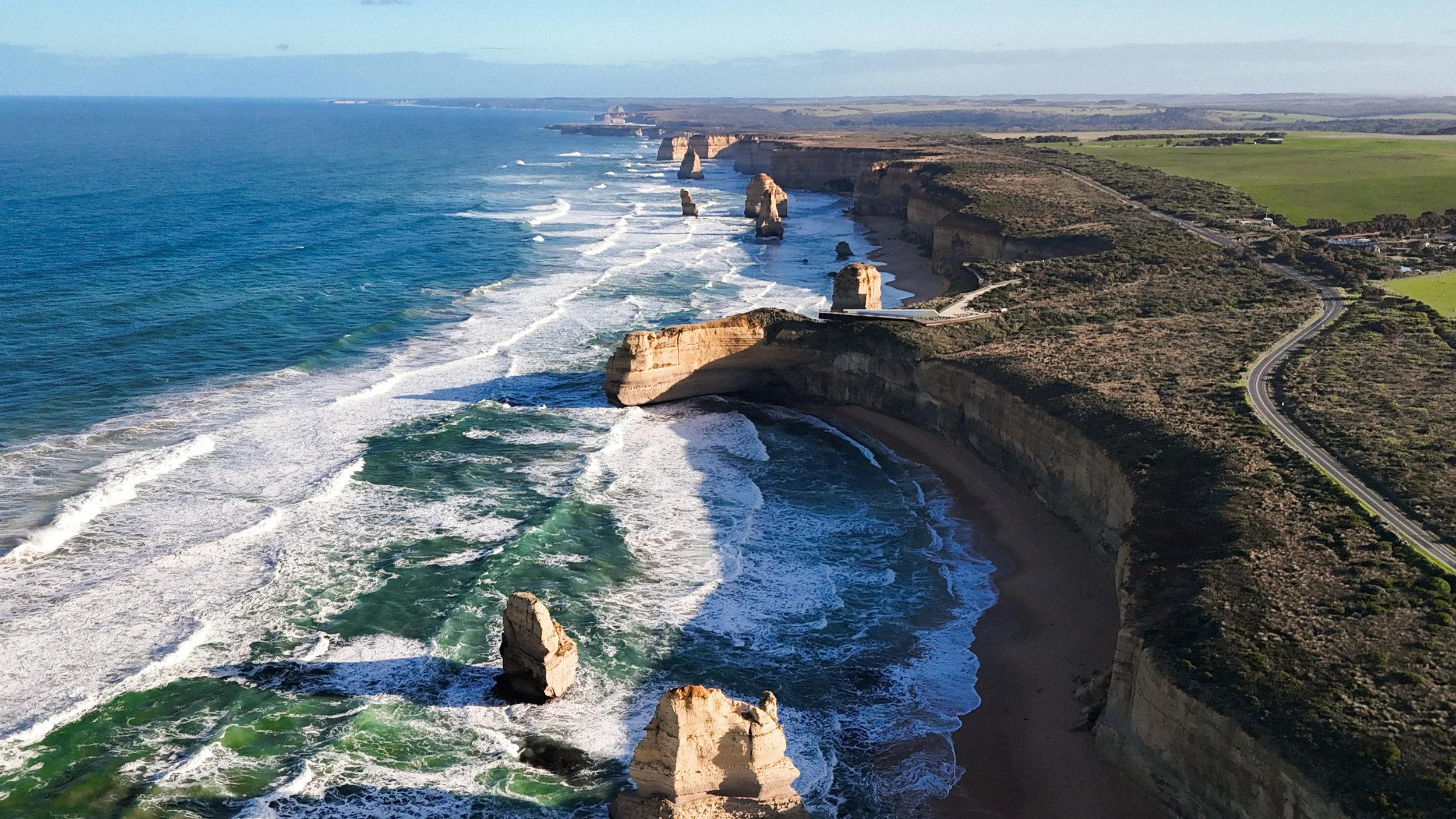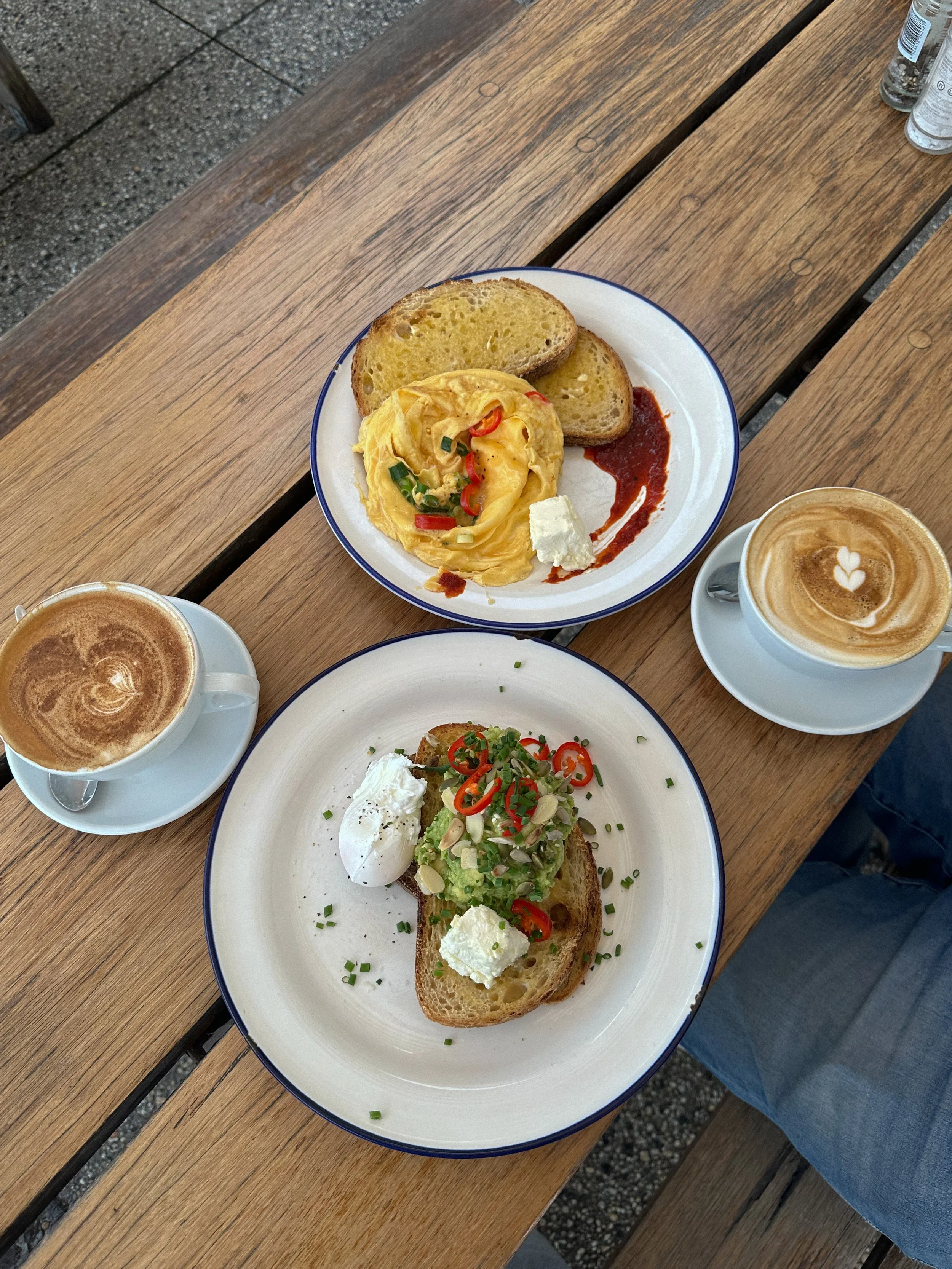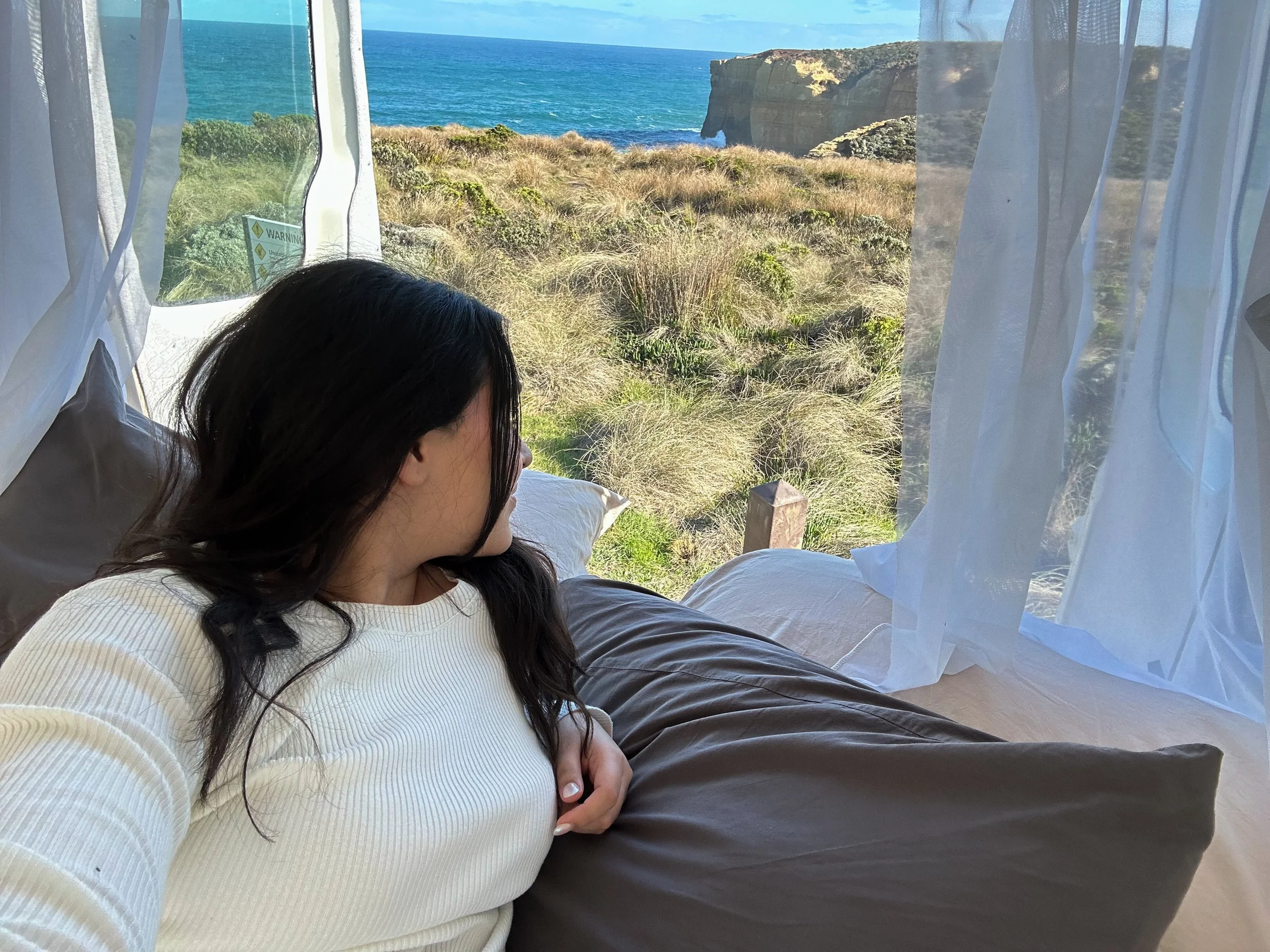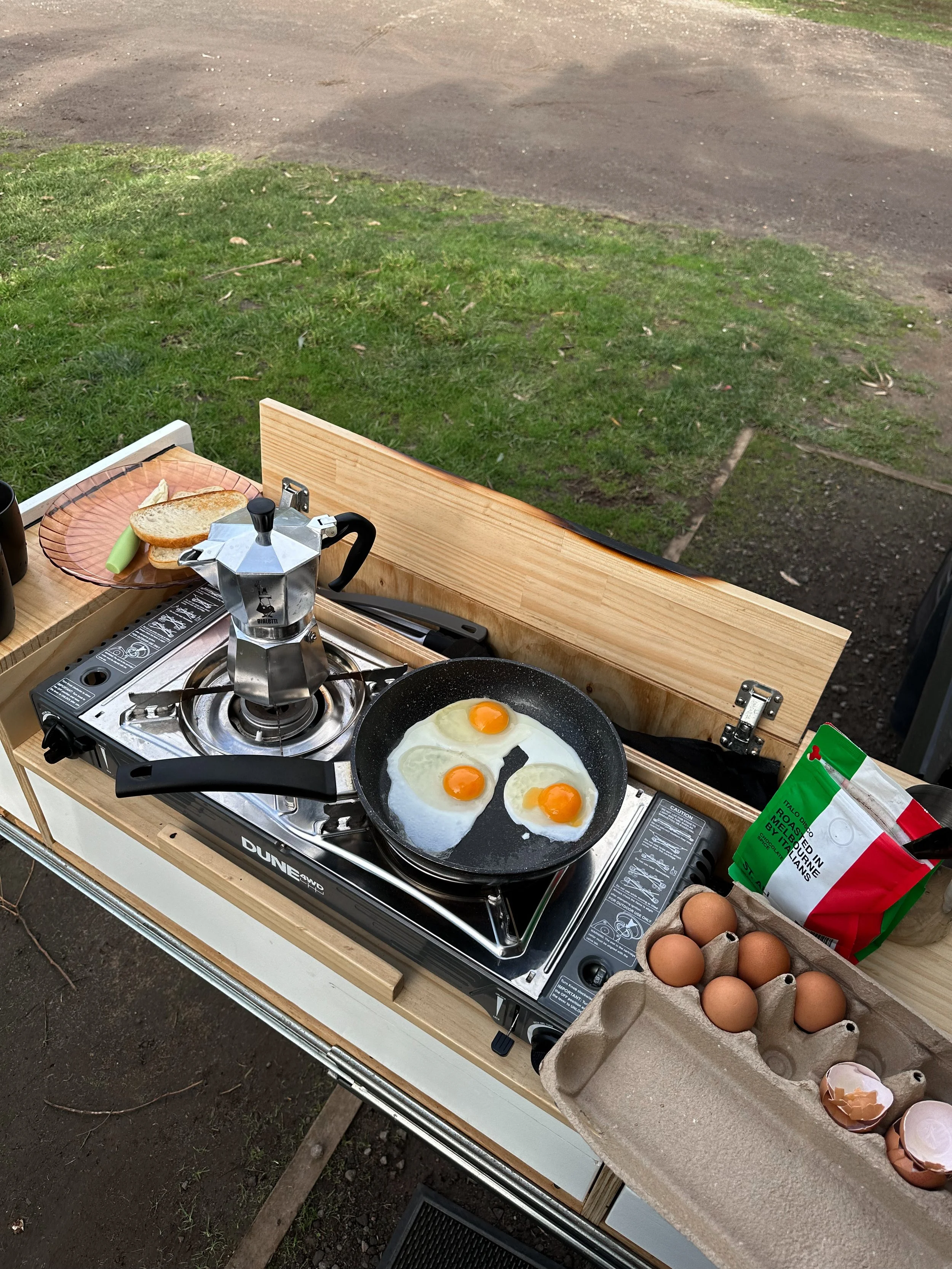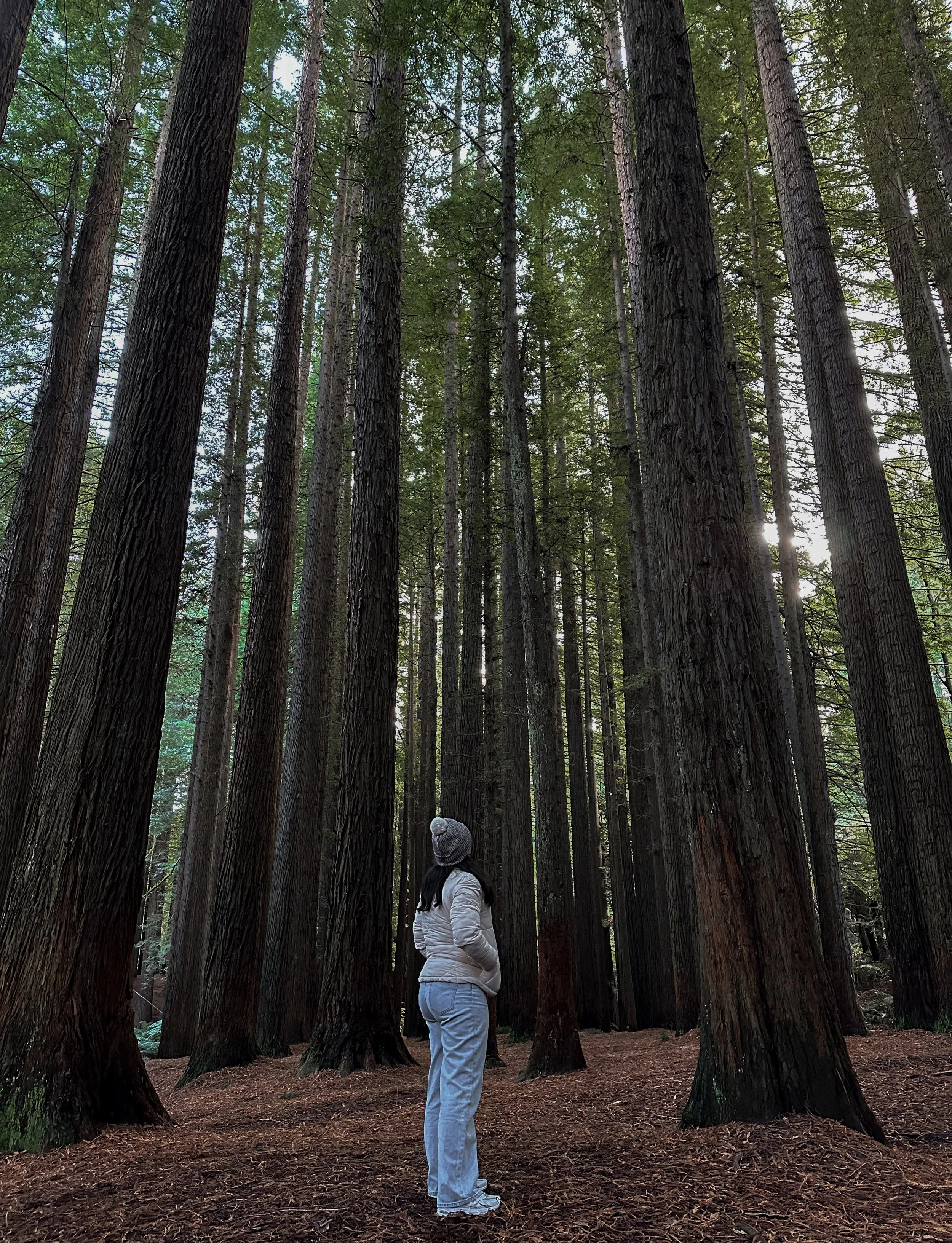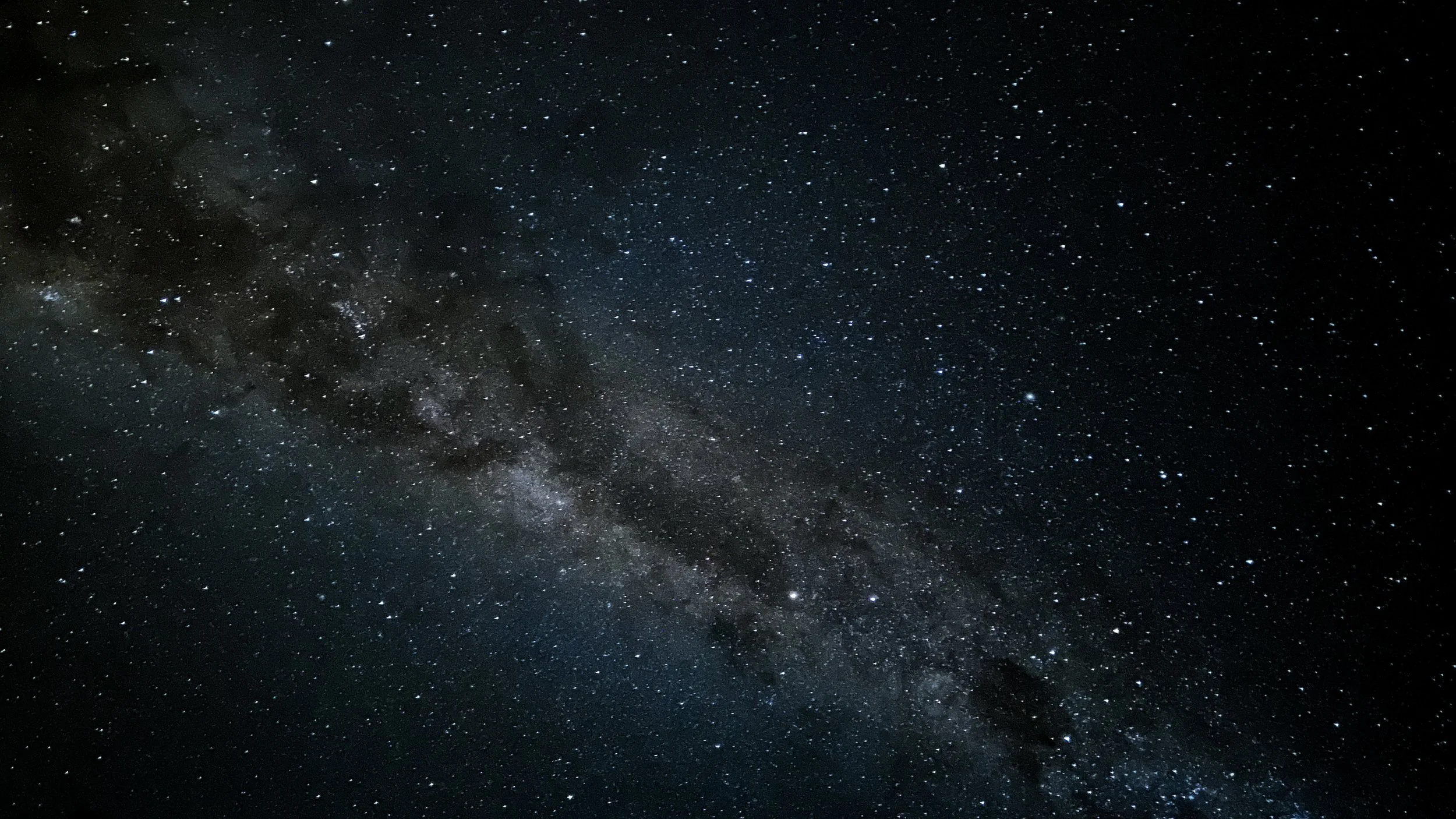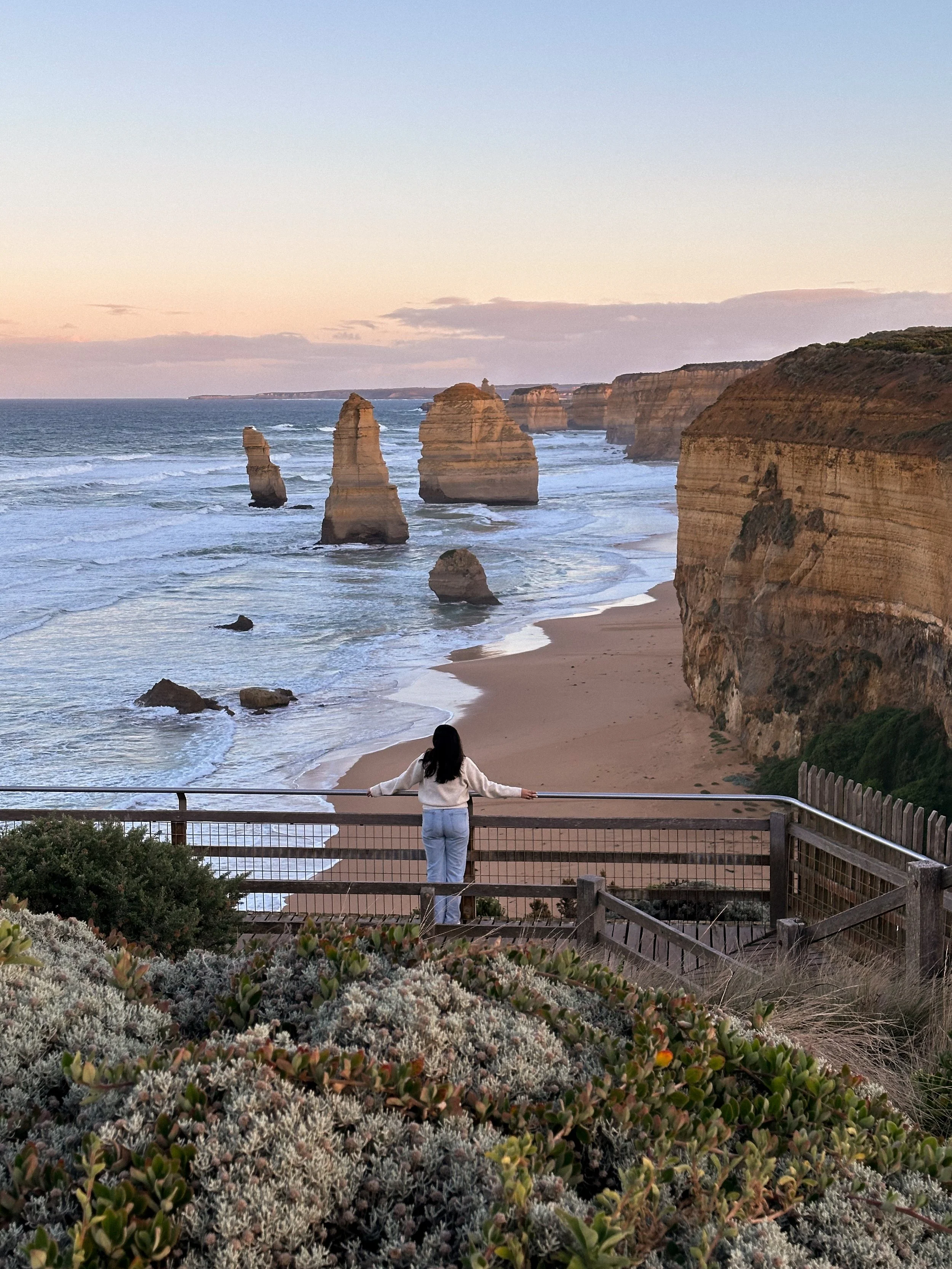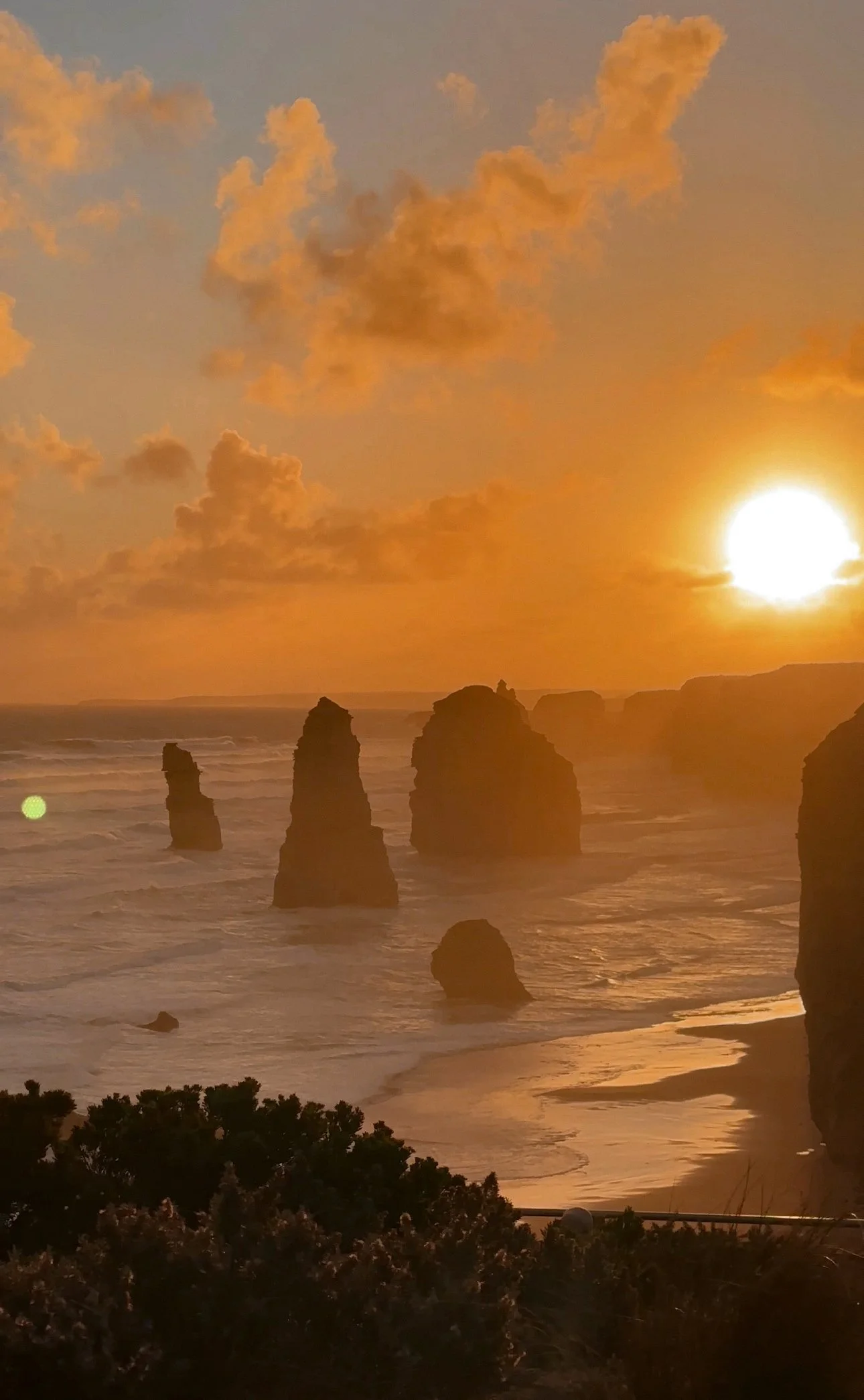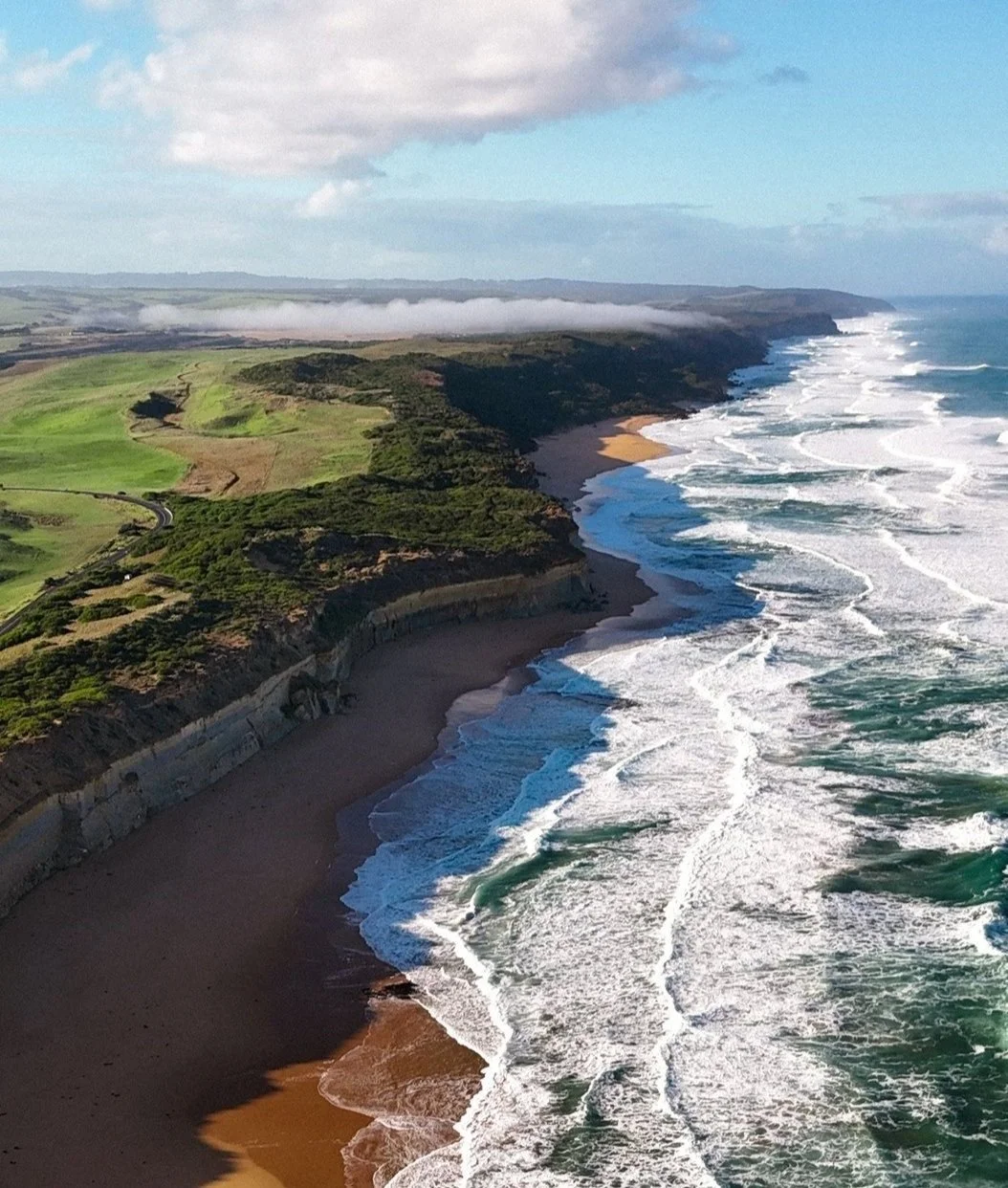Great Ocean Road - The Ultimate Travel Guide
Road tripping along the Great Ocean Road has been a dream of mine for the longest time and I finally ticked it off my bucket list! The Great Ocean Road is a winding coastal drive that offers spectacular views of stunning shore lines, huge sandstone sea stacks, dense rainforests and green farmlands. After driving it myself, I can see why it is considered one of the best and most scenic road trips in the world.
I spent one week travelling up and down the Great Ocean Road, stopping at popular attractions and lesser known spots along the way. By the end of it all, I can safely say it is one of my favourite areas I’ve explored in Australia and I only wish I could have spent more time here!
In this blog post, I talk about everything you need to know, including all the best information on places to stop, where to eat, experiences to have and things to see along the way so that you can have an incredible experience along the Great Ocean Road.
* Some of the links in this post are affiliate links. Purchasing through these links earns me a commission without costing you any extra - thank you for your support!
Things to KNOW BEFORE YOU VISIT THE GREAT OCEAN ROAD
HOW DO I GET TO THE GREAT OCEAN ROAD?
The Great Ocean Road is located 1.5 hours from Melbourne, Australia and spans for 273 kilometres between Torquay and Port Fairy. The best way to get here is by flying into Melbourne Airport (or driving if you’re already nearby). From Melbourne, there are a couple ways to travel along the Great Ocean Road, which prompts the next question…
SHOULD I HIRE A CAR OR BOOK A TOUR FOR THE GREAT OCEAN ROAD?
I think the Great Ocean Road is best explored when you drive it yourself. You’ll want the freedom and flexibility of going at your own pace, stopping whenever you’d like and visiting the sights that call to you most. If you’re not bringing your own vehicle, there are two ways you can do this - either by hiring a campervan, or by hiring a car and booking accommodation for each night along the way. We hired a campervan from Camplify and had the time of our lives.
The only downside to hiring a vehicle is that it can get costly once you factor in the price of insurance, petrol and campsites/accommodation along the way. If you are on a smaller budget, want to avoid the logistics of itinerary-planning, or only have a small amount of time to spare, joining a day tour could be the better option for you.
I’d recommend this tour as it departs from Melbourne and covers all the best spots within a day, ensuring you don’t miss out on the Great Ocean Road’s most iconic sites.
WHEN’S THE BEST TIME TO VISIT THE GREAT OCEAN ROAD?
The best time to visit the Great Ocean Road depends on your preferred travel style as the weather, crowds and prices are different in each season. We visited in May and loved it, however as it was coming into Winter, the weather was cooler and the days were a bit shorter. The weather was also a bit unpredictable - we got rained on a few times and missed out on some sunrises and sunsets because of it. The positive side of this was there was barely any crowds and campsites were much cheaper!
You may also want to consider visiting in Spring or Summer. These seasons offer warm, sunny weather which is perfect for longer days and hitting the beach. However, this is peak season so the traffic is heavier and more tourists means higher prices for both accommodation and rental cars.
If cooler weather and a bit of rain doesn’t bother you, I’d say Autumn, or even Winter, is an excellent time to visit. I’d definitely choose this time to visit again.
HOW LONG SHOULD I SPEND TRAVELLING THE GREAT OCEAN ROAD?
I highly recommend spending a minimum of three to five days along the Great Ocean Road to fully immerse yourself in its beauty. Whether it be overlooking the stunning coastline, hiking to the waterfalls of Great Otway or exploring the surrounding beach towns, there are so many spots you’ll want to stop at along the way; you simply can’t cover it in just one day. We spent five days on the road and it was one of the best trips I’ve done in Australia.
WHICH DIRECTION SHOULD I DRIVE THE GREAT OCEAN ROAD?
This is a question I mulled over for some time while planning our trip, so if you’re also giving it some thought, this is what I’ll say:
I did the drive from east to west (from Torquay to Port Fairy), but a lot of people choose to do the drive in reverse to skip traffic and crowds. With that being said, we drive on the left in Australia, so if you’re doing the road in reverse (from west to east), then you’ll have to cross over the road each time you want to pull over at a viewpoint… and there are A LOT of places to stop.
Secondly, driving east to west offers the best views as you follow the curvature of the coastline.
Driving the road from west to east could be a great option if you’re visiting in peak season and want to skip out on the traffic - but I’d make sure you budget enough time for crossing over the road to each stop off, or else you’ll fall massively behind and run out of time to see everything.
The biggest tip I can give you is that no matter which way you travel, the driving will usually take longer than you expect. This is because the roads can be quite windy and narrow. If you’re not used to driving on the left side of the road or a big vehicle, or the weather is not fantastic, then you might be travelling slower, thus adding time to your journey. As well, the roads can get congested in peak season and you’ll also want to account for time at each stop off. Take this into consideration and budget more driving time than you think!
Ultimately, whichever way you decide to travel, you will still be blown away by everything the Great Ocean Road has to offer.
MUST SEE PLACES along the great ocean road
There are plenty of places to see along the Great Ocean Road, it can feel totally overwhelming when planning.
I’ve summarised all the must see places below (including some lesser known spots I discovered). Driving from east to west, these are my recommendations:
Surf coast (Torquay - apollo bay)
TORQUAY — The journey along the Great Ocean Road begins in Torquay, the surfing capital of Australia. Bell’s Beach Lookout offers stunning views of the coastline, making it the perfect spot to get a small taste of the incredibly scenery that awaits on the Great Ocean Road. Don’t spend all your time here though - there’s plenty to see ahead of this!
AIREY'S INLET — The thing I loved most about doing the Great Ocean Road is that the views just continue to get more and more stunning and breathtaking. Split Point Lighthouse in Airey’s Inlet is a perfect example of this. Home to one of many Australian millenials’ fave childhood TV shows - Round the Twist - Split Point Lighthouse is an iconic stop off at the start of the Great Ocean Road. My favourite part was not the lighthouse itself, but the views off the cliff edge which were so incredible!
MEMORIAL ARCH — One of the most photographed spots on the Great Ocean Road, the Memorial Arch marks the official beginning of the scenic drive. Memorial Arch commemorates the World War I Veterans who built the road as a tribute to their comrades who died serving during the war. After you’ve stopped here for an obligatory photo, drive along the Devil’s Elbow and start to experience why the Great Ocean Road is considered one of the most scenic drives in the world.
memorial arch, great ocean road
LORNE — Lorne is a little coastal town and one of my favourite places we stopped along the Great Ocean Road. The information centre is a good place to stop to get the full history of how the road was built and to pick up a map for the drive that lies ahead (you know how I love collecting travel ephemera!). There are plenty of great food options around Lorne, my favourite being The Bottle of Milk cafe. Totti’s and Pholklore are also fantastic. After a bite, you’ll want to head up to Teddy’s Lookout for the perfect postcard view overlooking the Great Ocean Road.
ERSKINE FALLS — Erskine Falls is a stunning waterfall that plunges 30 metres. It’s super accessible with its viewpoint being only a short walk from the carpark, but you can also climb down to a second, lower lookout if you’re up for a little hike. I didn’t get here because of stormy weather, but it’s on my list for next time.
KENNETT RIVER — The Kennett River Koala Walk is the perfect place to spot wild koalas. There’s also a cafe here - making it the perfect little stop off for a light bite while you enjoy the company of some wholesome native animals.
APOLLO BAY — Apollo Bay is one of the most popular coastal towns on the Great Ocean Road. The seaside town is known for its seafood but there are plenty of other great food options to choose from. We stopped in at Apollo Bay Fisherman’s Co-op which was possibly some of the best takeaway fish and chips I’ve had. I’ve also heard great things about Apollo Bay Bakery’s scallop pie and Little Crumb Bakery’s croissants. If you’ve got some extra time to spare in Apollo Bay, something to do (aside from eating), would be to take a kayak tour to see the local sea lion colony with Apollo Bay Surf and Kayak. You could also head out on a guided nature walk with Wildlife Wonders where you will see and learn about native Australian wildlife (think koalas, kangaroos, kookaburras and wallabies) against a stunning ocean backdrop. They even have a sunrise experience which is when the animals are most active.
Great Otway NATIONAL PARK
Driving west from Apollo Bay, you will continue into Great Otway National Park - a dense forest dotted with waterfalls and Australian wildlife. Driving through the misty, winding roads and exploring the quiet forests here really made me feel like I was in some sort of fairyland. Fossil discoveries have dated the rainforest system as far back to 100-million years ago, so long before it was a national park, it was home to dinosaurs… and you will totally get that vibe as you drive through!
MAITS REST RAINFOREST WALK — Although a short and easy walk, Maits Rest is offers one of the most enchanting stops within the national park. Here you’ll find moss-covered trees, giant ferns, and the peaceful sounds of the forest. It’s perfect if you don’t have much time for long hikes in the area and you want to learn a bit about the ancient biodiversity of Great Otway.
OTWAY REDWOODS, BEECH FOREST — The Otway Redwoods are a place that makes you feel small in the best way possible. It felt totally awe-inspiring and unique to the rest of Australia, and out of all places I visited in the Otways, this is the one I’d return to first.
HOPETOUN FALLS + BEAUCHAMP FALLS - Both of these waterfalls are a must if you're up for a short but rewarding hike through stunning rainforest. They’re not far from the Otway Redwoods, so you can group all three into one day. The stillness of the surrounding forest make them both feel like hidden treasures.
OTWAY FLY TREETOP ADVENTURES — This one is for my adrenaline junkies and adventure travellers! Otway Fly Treetop Adventures have a steel canopy suspended high in the trees that will give you a whole new perspective of the Otways. There’s a zipline too! Such a fun experience.
CAPE OTWAY LIGHTHOUSE — A little detour off the main Great Ocean Road will land you at Cape Otway Lighthouse, the oldest lighthouse on mainland Australia. You can climb the lighthouse during the day and even book to stay the night inside it. What I loved though, was the nearby walking trails. We camped nearby in Bimbi Park so it was the perfect area for a little sunrise walk, but it’s an even better spot for stargazing. On clear nights, you’ll see the Milky Way stretch across the sky, and you may even catch a glimpse of the Aurora Australis (Southern Lights) during solar activity peaks.
shipwreck coast (gibson’s steps - PORT FAIRY)
Arguably the most iconic area of the Great Ocean Road and without a doubt, my favourite part. This stretch of coastline is home to the dramatic, coastal scenery you’ve probably seen on postcards and in travel guides. No amount of pictures can prepare you for it though, because these sights will take your breath away when you see them in person. Towering limestone cliffs, hidden coves and rugged rock formations that have been shaped by the Southern Ocean over millions of years - this section of the road is just unforgettable.
GIBSON STEPS — This is one of the few places where you can actually stand next to the towering cliffs that the Great Ocean Road is known so well for. Standing at the base of Gibsons Steps is such a surreal and humbling experience - you absolutely have to go here.
TWELVE APOSTLES — I don’t need to tell you about the Twelve Apostles because you already know them. It’s the most iconic stop along the Great Ocean Road and is likely already on your itinerary. What I will say is that sunsets here are absolutely gorgeous - you should plan to see at least one while you’re here. And if you’re looking for an even more unforgettable experience, book a scenic helicopter flight.
THE BAKER’S OVEN — The Baker’s Oven is a lesser-known gem that is equally as beautiful as any of the other stops I mentioned above, just without the crowds. The rock arch gets its name because it literally looks like an oven. We spent almost a full day parked up here, admiring the view and enjoying its peacefulness. Easily one of my favourite spots along the whole Great Ocean Road - do not miss it!
SPARKS GULLY — I can’t believe how little people visit this spot. The stretch of coast at Sparks Gully feels completely untouched - you just have to see it for yourself.
PORT CAMPBELL — Port Campbell is a cute, little seaside town not too far from the Twelve Apostles. It’s a great place to stay the night and spend the next morning exploring. You’ll want to check out Grassroots Deli Cafe and Port Campbell Ice Creamery when you’re here. Just north of here, you’ll also find the 12 Apostles Gourmet Trail. If you’re a foodie like me, it’s well worth checking out!
LONDON BRIDGE — Just a few minutes from Port Campbell, you’ll find the London Bridge, which is another iconic rock formation. The formation used to be a natural archway which connected to the mainland before it partially collapsed in 1990. What remains is still a gorgeous sight, especially as the sun starts to set and the golden light bounces off the stone. There’s a huge, accessible viewing platform here and it’s a relatively quick stop - so it’s definitely worth checking out.
THE GROTTO — A short walk down a wooden staircase will take you to The Grotto, a sinkhole, cave and rock pool which forms a stunning viewing spot. It’s super peaceful and such a unique sight to see.
where to stay on the great ocean road
We stayed in Lorne Foreshore Caravan Park, Bimbi Park and Princetown Recreation Reserve with our campervan along the way. These were all great campsites. Bimbi Park was my favourite. It felt really secluded and there were so many koalas and kangaroos around.
Accommodation can get quite expensive along the Great Ocean Road during peak season. If you’re camping, I recommend downloading the Wikicamps app to find the best and most affordable campsites suited to you. If you’re travelling in peak season, book in advance as places do book out (making reservations on the same day will be near impossible).
As for hotels and Airbnbs along the Great Ocean Road, there are soooo many to choose from! Here’s some I would have loved to check out:
Sunnymead Hotel, Aireys Inlet
Seafarers Getaway, Apollo Bay
Anchors, Port Campbell
FINAL Tips for the great ocean road
Pack for all seasons. The weather can be unpredictable. Even in summer, pack layers for chilly evenings and comfy shoes for exploring trails and beaches. And don’t forget your SPF - I swear the sun in Australia is built different. The UV can be strong even on overcast days.
Book your campervan through Camplify.
If you’re travelling by campervan, make sure you know where you’re staying a day prior as even the most basic of campgrounds can get booked out or stop taking bookings before close of business for the day (around 5pm). If you’re travelling in peak season, book further in advance.
Use an app like WikiCamps to find all the closest campsites and amenities! Seriously, thank me later.
Avoid driving at night. The roads are narrow and there’s a high chance of wildlife crossing (and they come out of nowhere!), particularly in Great Otway National Park. Besides, every section of this road is stunning - you’ll want to see it all in the day time.
For the solo female travellers, the Great Ocean Road will be great for you. The locals are welcoming and the towns are relatively safe. As always, take precautions and let someone know your plans. Otherwise, enjoy the freedom of the open road. Just thinking about it makes me want to plan a solo trip back there too!
Take it slow. This is not the type of trip you want to rush. The best experiences - sunrises and sunsets at the Twelve Apostles, exploring hidden beaches, koala sightings - all happen when you’re not on a tight schedule. Give yourself enough time to explore at a relaxed pace.
Where to next?
Perhaps you’re heading home now, or perhaps your travels around Australia continue. If you’re still on the road - head on through to Port Fairy then the Grampians, or back to Melbourne before you check out Wilson’s Promontory. I’ll have blog posts up for these locations soon - so make sure to drop your email below to stay updated! x
Thank you!
There you have it - the ultimate Great Ocean Road travel guide. If you have any questions, please comment below and I will do my best to answer.
I hope your visit to the Great Ocean Road is as beautiful as mine was!
Until next time,
Erika x
